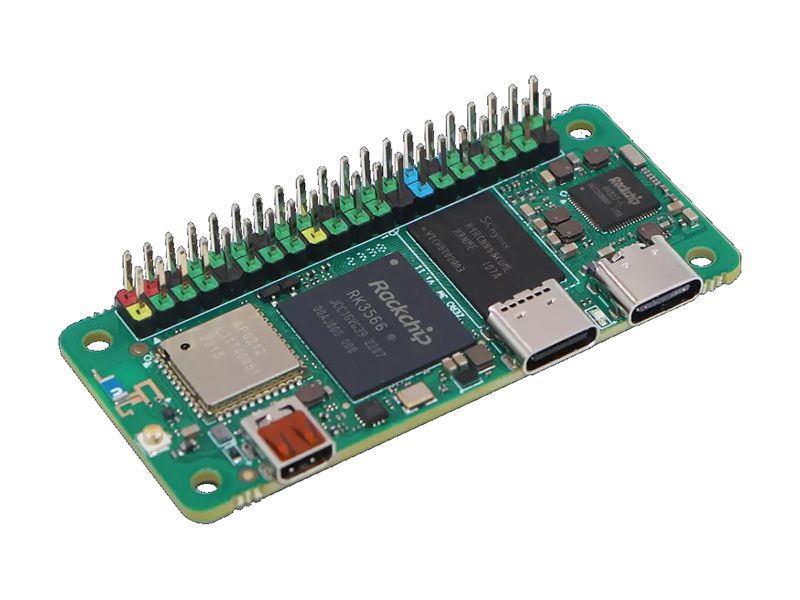
Radxa Zero 3W by Radxa
RADXA Zero 3W is an Rockchip RK3566 64bit quad core based Mini SBC in the same form factor as the Raspberry Pi Zero, but with much, much more power. It has quad-core power with up to 8GB LPDDR4 RAM that has similar dimensions to a USB stick.
Technical details
- Rockchip RK3566 64bit quad-core processor, Quad-core Arm® Cortex®-A55 (ARMv8) 64-bit @ 1.6GHz
- Arm Mali™-G52-2EE, OpenGL® ES1.1/2.0/3.2, Vulkan® 1.1, OpenCL™ 2.0
- LPDDR4 1GB / 2GB / 4GB / 8GB
- Soldered high performance eMMC 5.1 with capacities of 8GB / 16GB / 32GB / 64GB
- uSD slot supports up to 128GB uSD card
- H.264/H.265 decoder up to 4K@60fps
- H.264/H265 encoder up to 1080p@60fps
- 1080p@60fps via Micro HDMI
- WiFi4 (802.11 b/g/n) / BT5.0 with onboard antenna and uFL connector, antenna option can be configured via software
- USB 2.0 HOST
- USB 2.0 OTG (for power and data)
- MIPI CSI x1
- Wireless 802.11 b/g/n, WiFi 2.4GHz, Bluetooth 5.0
- up to 5 x UART
- 1 x SPI bus
- up to 2 x I2C bus
- 1 x PCM/I2S
- up to 6 x PWM
- up to 28 x GPIO
- 2 x 5V DC power in
- 2 x 3.3V power pin
- ARMv8 Instruction Set
- Debian/Ubuntu Linux support
- Hardware access/control library for Linux
- Maskrom button
- 66 x 30 mm
Purchase
Contribute
Have some info to add for this board? Edit the source for this page here.
Adafruit Blinka Installation
We use a special library called adafruit_blinka (named after Blinka, the CircuitPython mascot) to provide the layer that translates the CircuitPython hardware API to whatever library the Linux board provides.
For example, on Raspberry Pi we use the python RPi.GPIO library. For any I2C interfacing we'll use ioctl messages to the /dev/i2c device. For SPI we'll use the spidev python library, etc. These details don't matter so much because they all happen underneath the adafruit_blinka layer.
